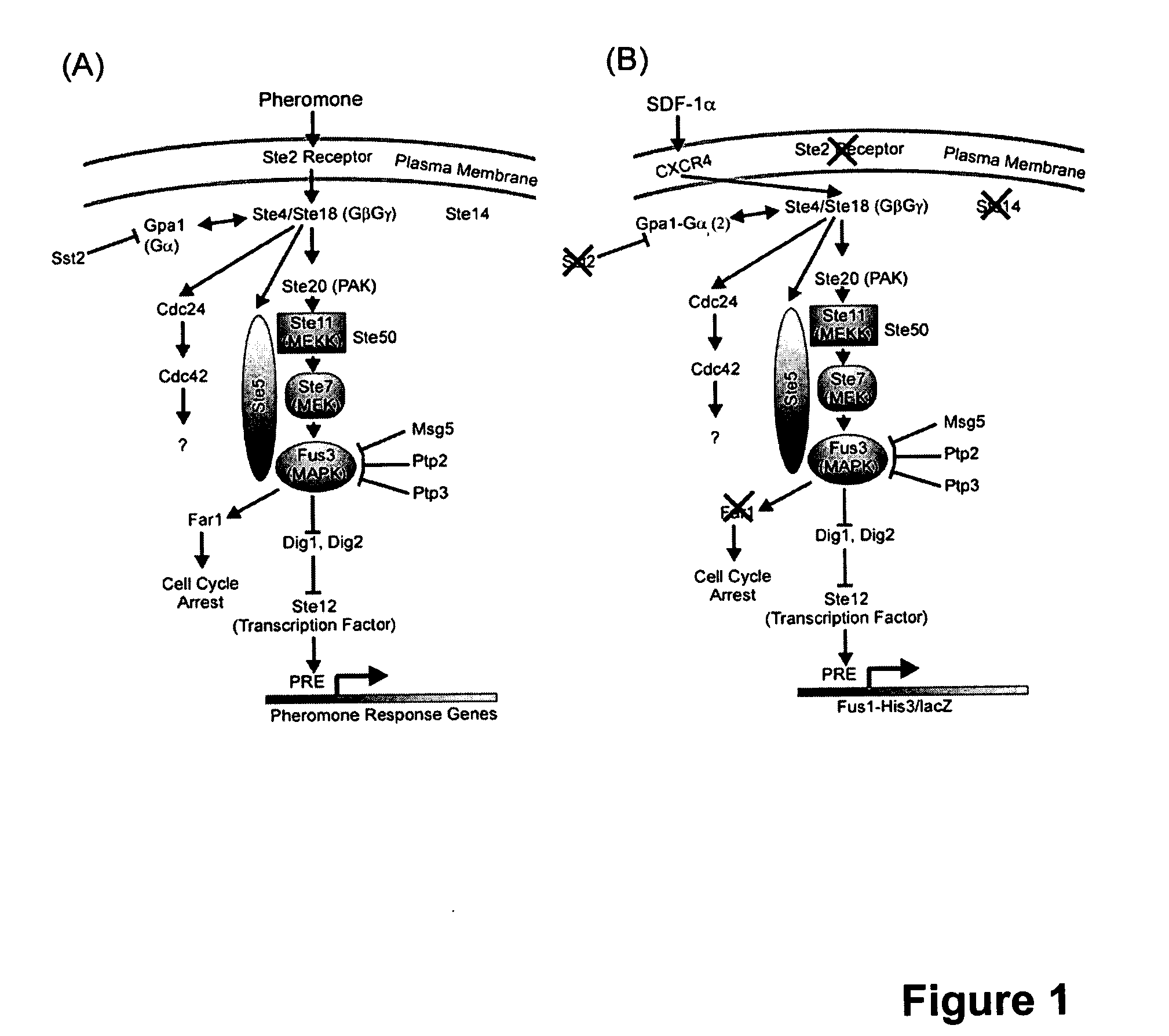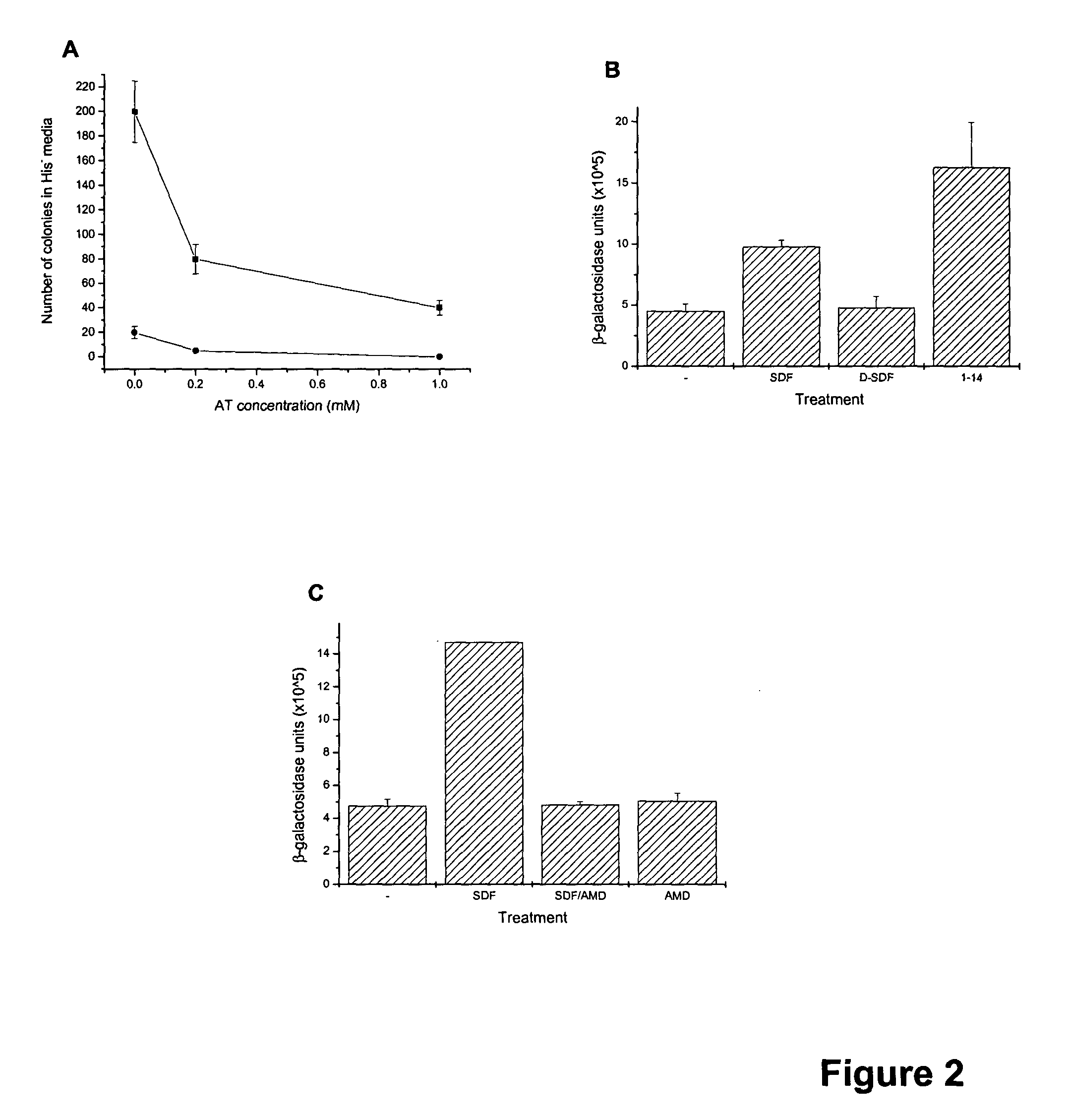Identification of allosteric peptide agonists of CXCR4
a technology of allosteric peptides and agonists, applied in the field of allosteric agonists, can solve problems such as severe adverse effects
- Summary
- Abstract
- Description
- Claims
- Application Information
AI Technical Summary
Problems solved by technology
Method used
Image
Examples
Embodiment Construction
[0014] Materials and Methods
[0015] Vector Construction and Strains.
[0016] The initial S. cerevisiae strain was CY12946 (MATα FUS1p-HIS3 GPA1Gαi2(5) canI farIΔI442 his3 leu2 sst2Δ2 ste14::trp1::LYS2 ste3Δ1156 tbt1-1 trp1 ura3) (23). Except for the specific chimeric Ga subunit expressed, CY12946 is genetically similar to CY1141, reported in Klein et al. (18), with two differences. First, the two strains express different Gα subunits. Specifically, CY12946 expresses a chimeric Gα subunit (GPA1Gαi2(5)) in which the C-terminal 5 amino acids of the yeast Ga subunit, GPA1, are replaced by the C-terminal 5 residues of Gαi2. In contrast, as described by Klein et al. (18), CY1141 expresses a chimeric Ga subunit (GPA1(41)Gαi2) in which the N-terminal 33 residues of Gαi2 are replaced by the 41 N-terminal residues of GPA1. We have used CY12946 in the current report because GPA1Gαi2(5) is more efficient than GPA1(41)Gαi2 in coupling CXCR4 to the pheromone response pathway. The use of GPA1Gαi2(5...
PUM
| Property | Measurement | Unit |
|---|---|---|
| Toxicity | aaaaa | aaaaa |
Abstract
Description
Claims
Application Information
 Login to View More
Login to View More - R&D
- Intellectual Property
- Life Sciences
- Materials
- Tech Scout
- Unparalleled Data Quality
- Higher Quality Content
- 60% Fewer Hallucinations
Browse by: Latest US Patents, China's latest patents, Technical Efficacy Thesaurus, Application Domain, Technology Topic, Popular Technical Reports.
© 2025 PatSnap. All rights reserved.Legal|Privacy policy|Modern Slavery Act Transparency Statement|Sitemap|About US| Contact US: help@patsnap.com



